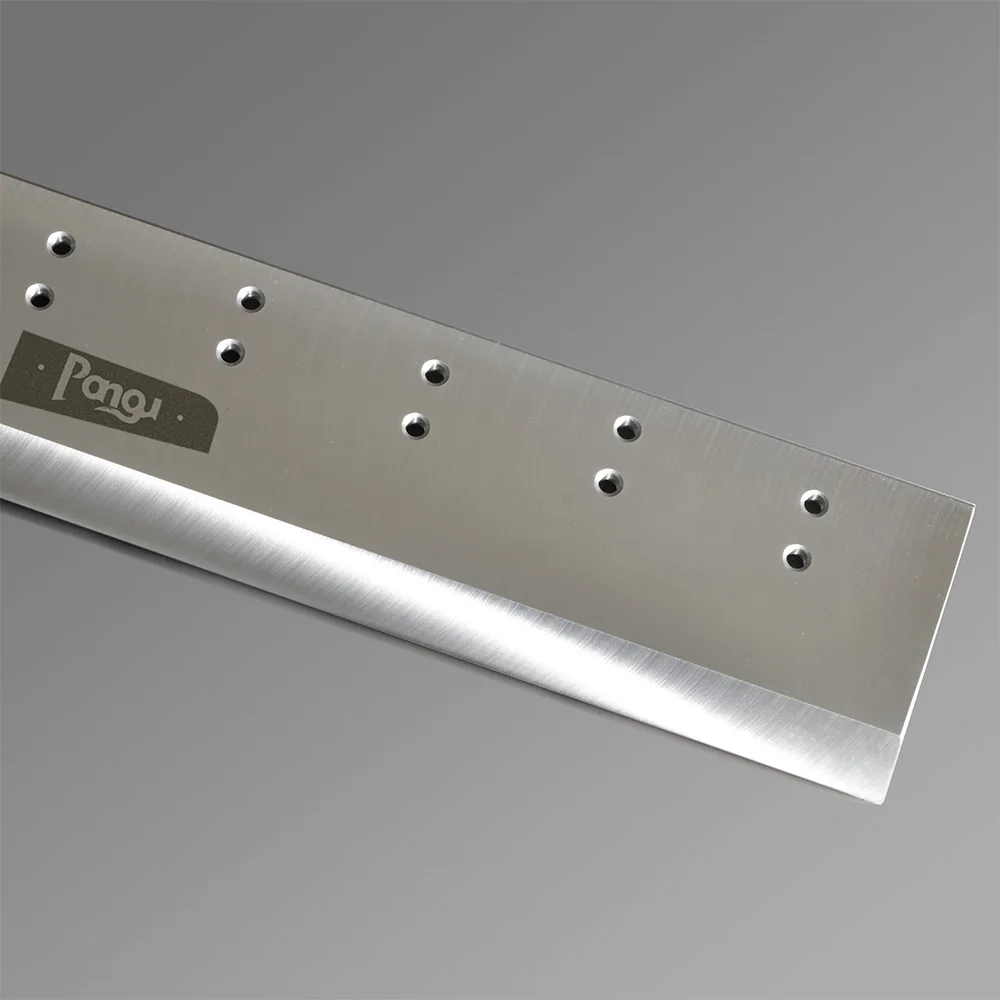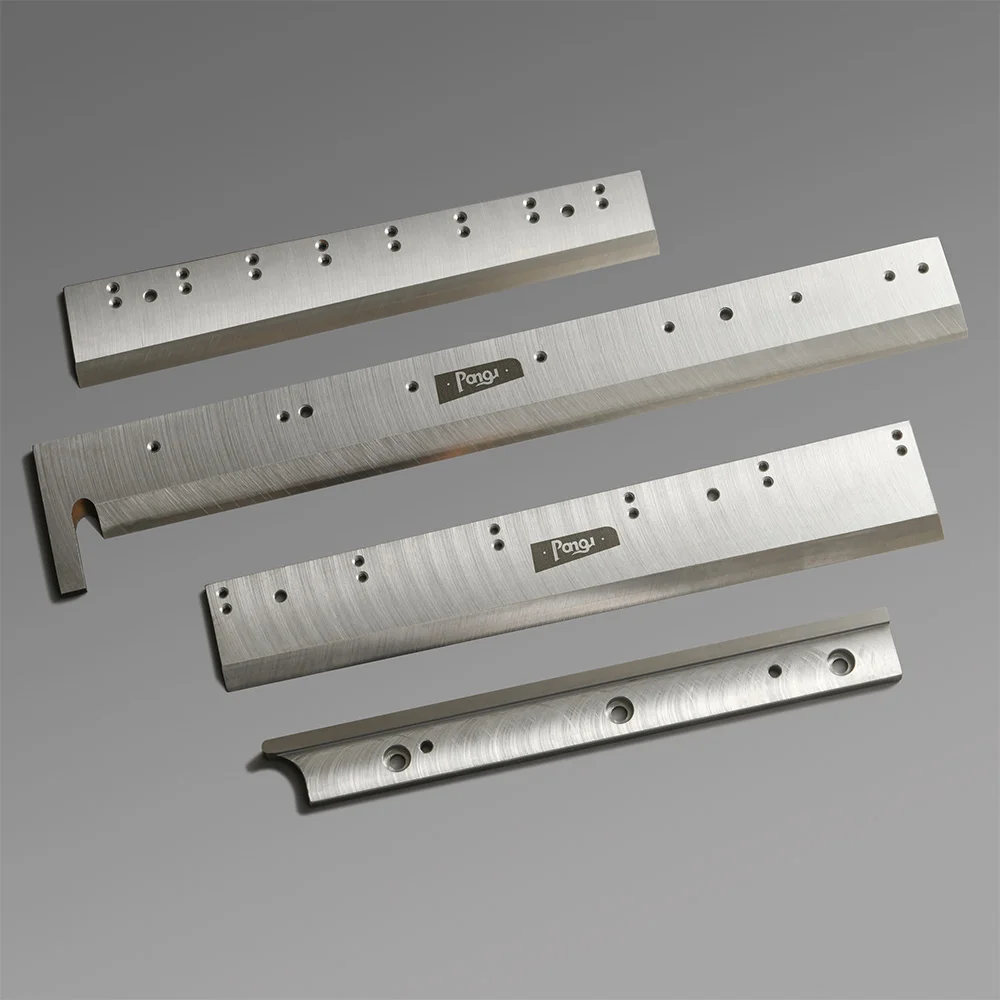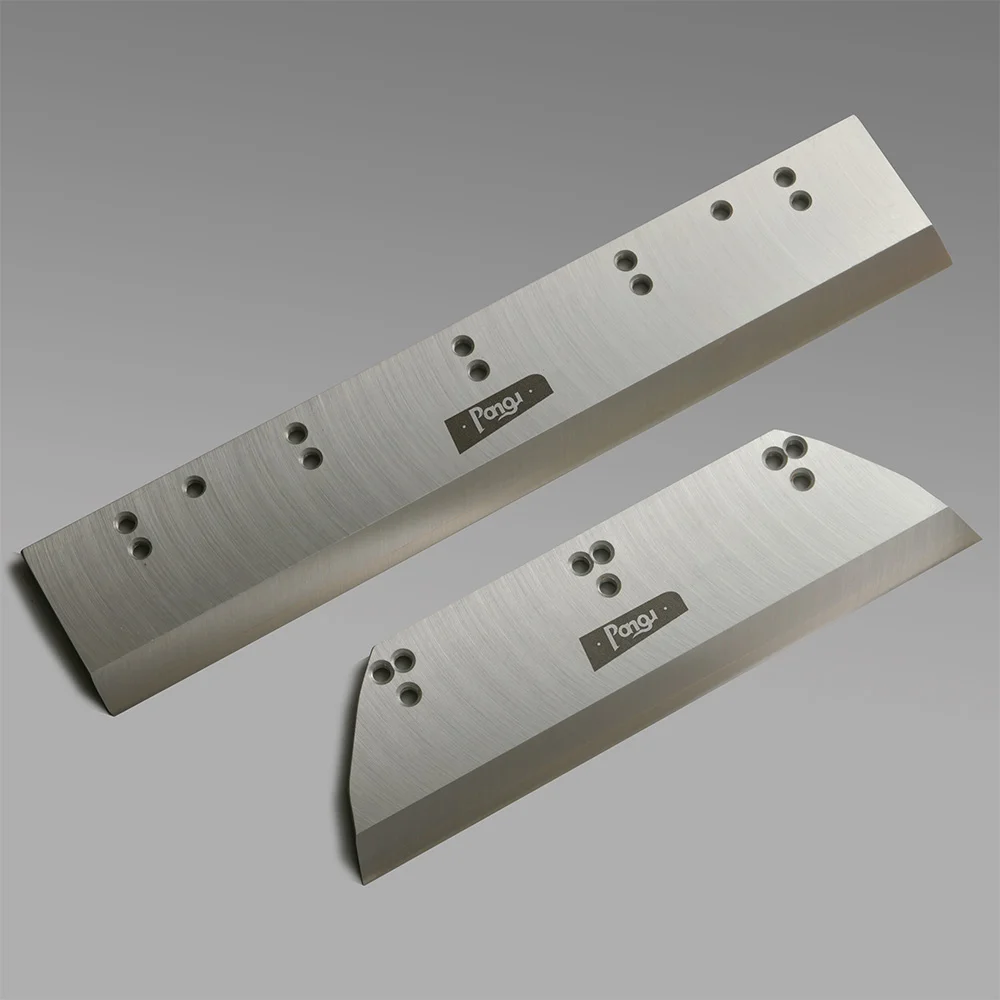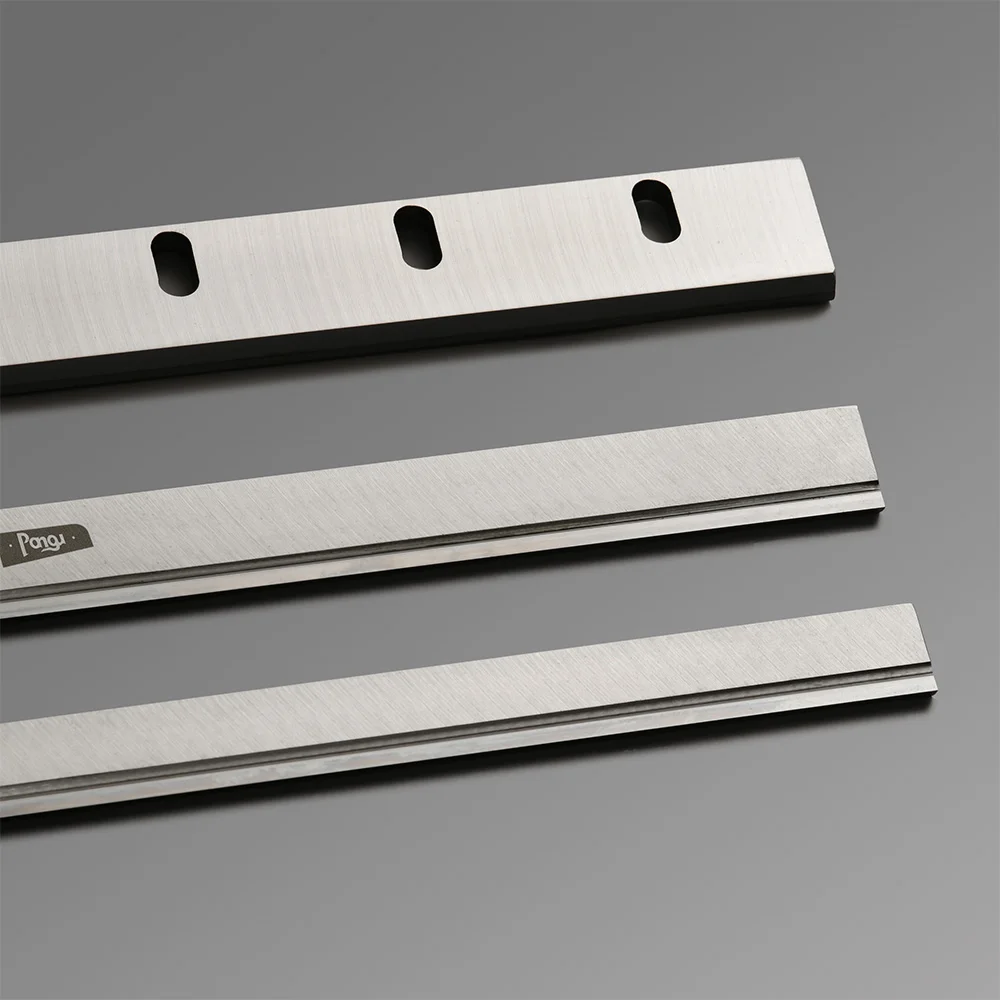Table of Contents
Introduction: The Overlooked Hero of Finishing
In the printing and packaging industry, equipment specs often get the spotlight, while cutting blades remain overlooked. Yet, they determine the final trimming precision, directly affecting product quality, machine wear, and production efficiency.
Smart Equipment Solutions from PrintingMates
– Guillotine Blades: Used in large-format paper cutters like Polar, Wohlenberg, and Perfecta.

–Saddle Stitch Trimmer Knife: Paired with saddle stitchers for final edge trimming.

– Three Knife Trimmer Blade: Left, right, and front blades used for trimming book blocks.

– Cross Cutting Knife & Die Cutting Blade: Applied in high-speed sheet cutting for labels, invoices, and packaging rolls.


Blade Materials: HSS vs Tungsten vs Standard Steel
Material choice determines sharpness, durability, and cost:
• High-Speed Steel (HSS): Balanced sharpness and price, ideal for most cutting tasks.
• Tungsten Steel: Offers superior hardness and long life, ideal for large-volume production.
• Standard Steel: Budget-friendly, best for low-duty use or temporary replacement.
Brand Compatibility and Common Mistakes
Each machine brand has specific blade specs. For example, Polar blades have standardized length and hole patterns. Buying incompatible blades can lead to quality issues or equipment damage. PrintingMates offers precise-matching blades for Polar, Wohlenberg, Perfecta, and more.
Usage Problems and Maintenance Tips
Common issues include burrs, uneven cuts, or tearing. Causes include dull blades, misalignment, or overload. We recommend checking blade condition regularly and regrinding after every 30,000–50,000 cuts.
How to Choose a Reliable Blade Supplier
A good supplier offers:
• Verified material and processing quality
• Precise tolerance control
• Grinding services and lifetime tracking
• Guidance on brand compatibility
PrintingMates collaborates with trusted Chinese manufacturers to deliver OEM-grade cutting blades with global delivery.
Conclusion: A Small Part with a Big Impact
Cutting blades are not just accessories—they’re essential tools for clean, efficient production. Investing in the right blade helps reduce waste, improve cut quality, and boost productivity. Explore the cutting blade selection on PrintingMates for expert advice and dependable supply.
